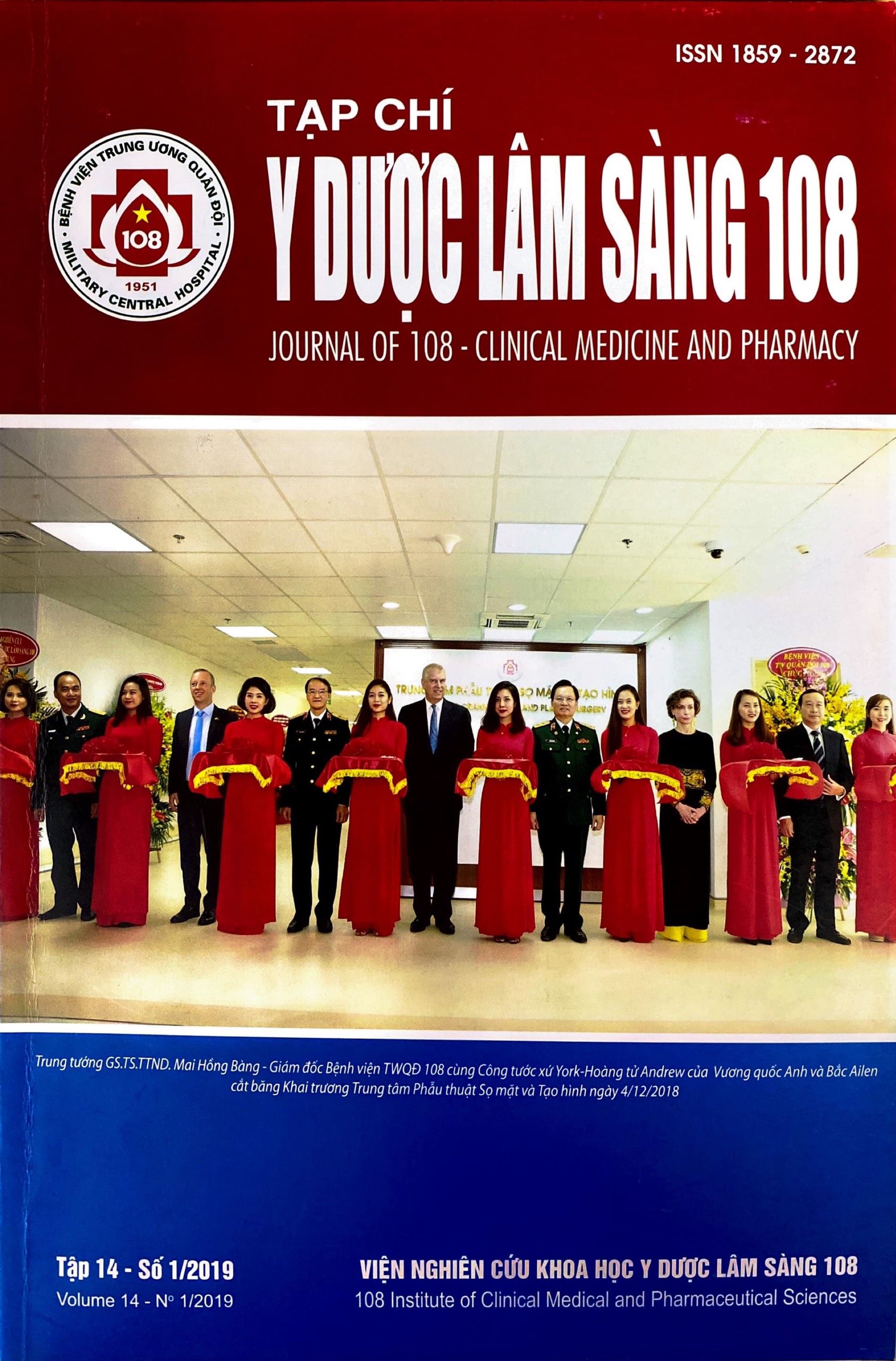Efficacy of hemoclips alone and adrenaline injection combined hemoclips therapy in treatment of bleeding due to gastroduodenal ulcers
Main Article Content
Keywords
Abstract
Objective: To compare hemoclips + adrenaline injection with hemoclips alone for the treatment of bleeding due to gastroduodenal ulcer. Subject and method: 150 patients with major stigmata of gastroduodenal ulcer bleeding were randomly assigned to receive hemoclips + adrenaline (n = 75) and hemoclips alone (n = 78). All patients were received clinical examination, laboratory tests, and upper gastrointestinal endoscopy. The primary end point of rebleeding rate, initial hemostasis rate, need for surgery rate and mortality were compared between the two groups. Result: Initial hemostasis was achieved in 75/75 patients (100%) of the hemoclips + adrenaline group and 68/75 (90.7%) of the hemoclips alone (p<0.05). The rate of recurrent gastrointestinal bleeding, blood transfusions, hospital stays, surgical rate of the group hemoclips + adrenaline were significantly lower (p<0.05) compared with patients with hemoclips alone (p<0.05). Side effects included sore throat, nausea and vomiting, light epigastric pain with no differences between the 2 groups. Conclusion: Combination therapy (clip + adrenaline) was better efficiency than clip alone.
Article Details
References
2. Bộ Y tế - Bệnh viện Bạch Mai (2011) Hướng dẫn chẩn đoán và điều trị bệnh nội khoa. Nhà xuất bản Y học.
3. Trần Việt Tú, Thái Bá Có (2005) Nhận xét hiệu quả của 2 dung dịch NaCl 3,6% - adrenaline 1/10.000 và polidocanol trong điều trị chảy máu tiêu hóa do loét dạ dày - tá tràng qua nội soi. Y học thực hành số 4, tr. 23-25.
4. Lewis JD, Bilker WB, Brensinger C et al (2002) Hospitalization and mortality rates from peptic ulcer disease and GI bleeding in the 1990s: Relationship to sales of nonsteroidal anti-inflammatory drugs and acid suppression medications. Am J Gastroenterol 97: 2540-2549.
5. Forrest JA, Finlayson ND, Shearman DJ (1974) Endoscopy in gastrointestinal bleeding. Lancet 2(7877): 394-397.
6. Barkun A, Sabbah S, Enns R et al (2004) The Canadian registry on nonvariceal Upper Gastrointestinal Bleeding and Endoscopy (RUGBE): Endoscopic hemostasis and proton pump inhibition are associated with improved outcomes in a real-life setting. Am J Gastroenterol 99: 1238-1246.
7. Lim CH, Vani D, Shah SG et al (2006) The outcome of suspected upper gastrointestinal bleeding with 24 hour access to upper gastrointestinal endoscopy: A prospective cohort study. Endoscopy 38: 581-585.
8. Forrest JA, Finlayson ND, Shearman DJ (1974) Endoscopy in gastrointestinal bleeding. Lancet 2: 394-397.
9. Khan IY, Naresh TG (2011) Nonvariceal upper gastrointestinal bleeding. Clinical Gastrointestinal Endoscopy- Second Edition, Chapter 12: 128-144.
 ISSN: 1859 - 2872
ISSN: 1859 - 2872
